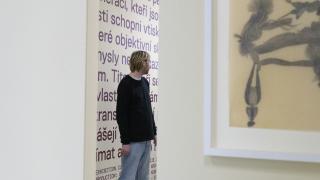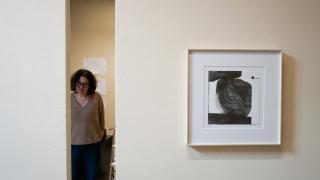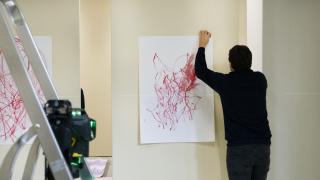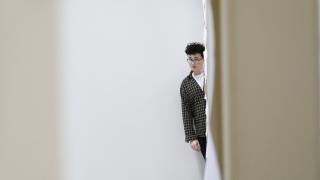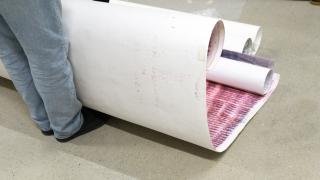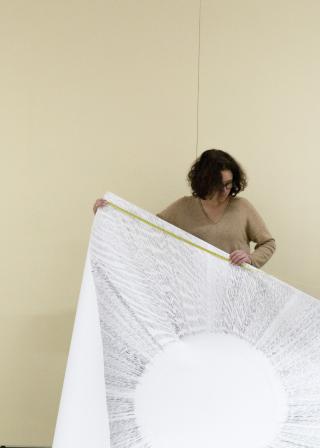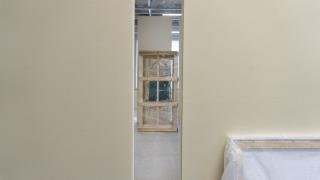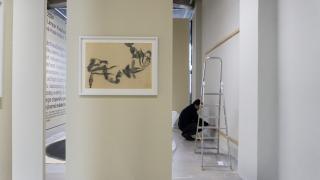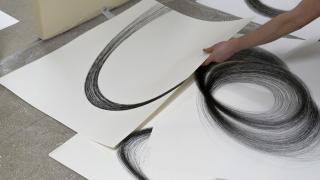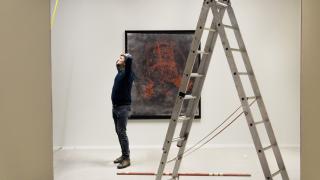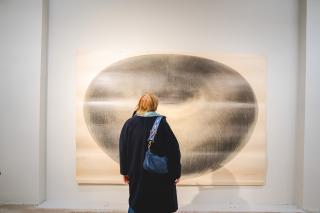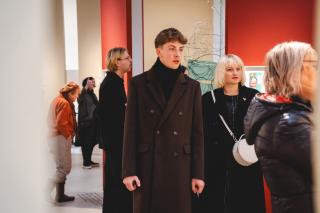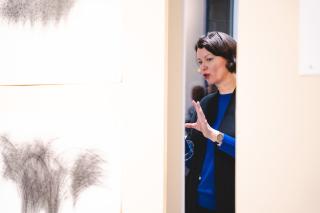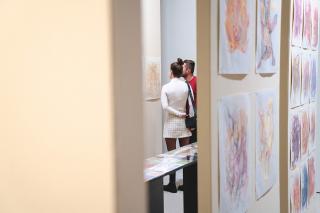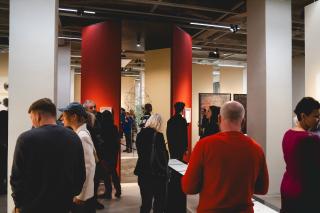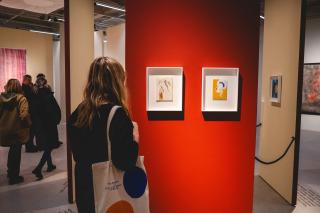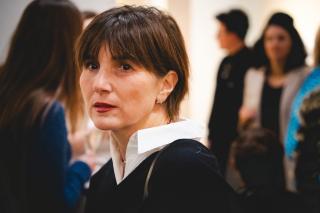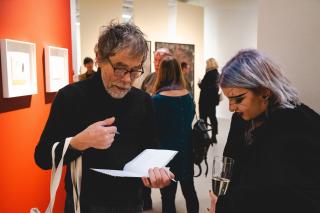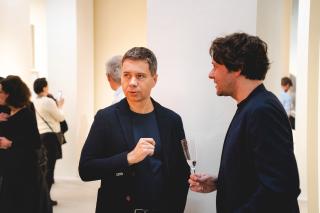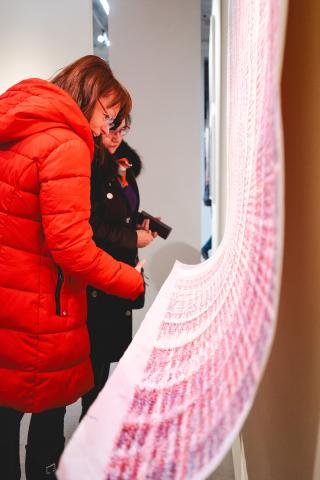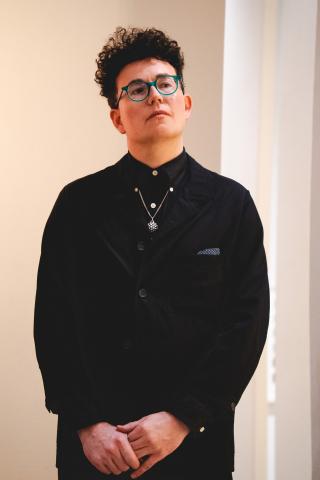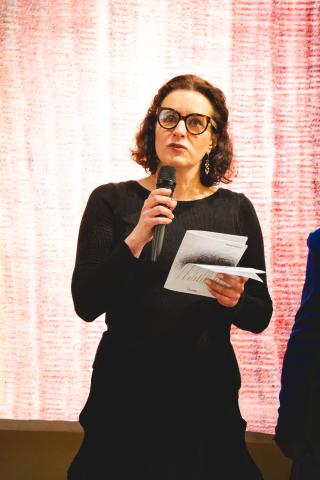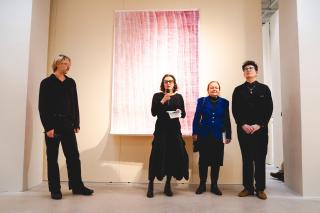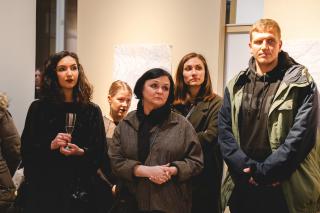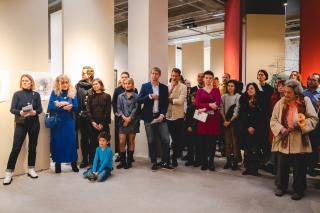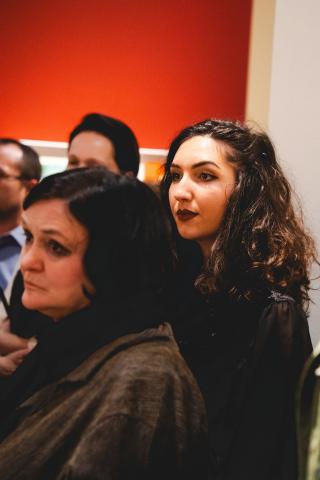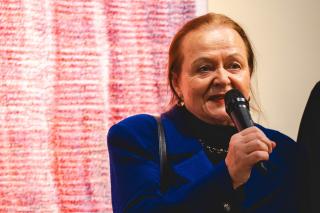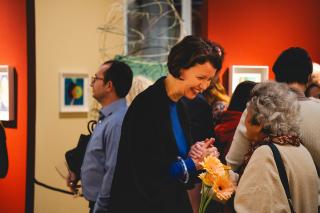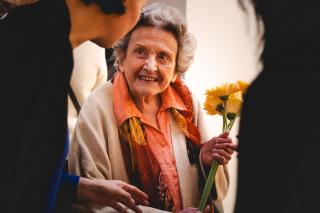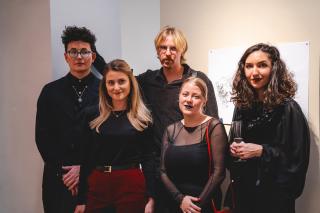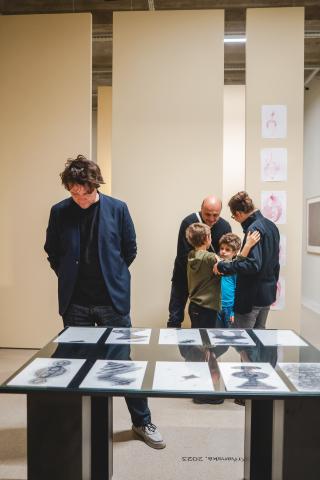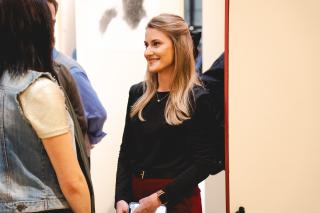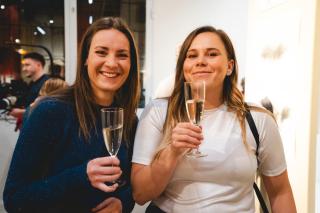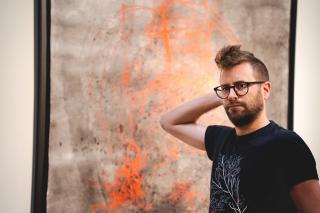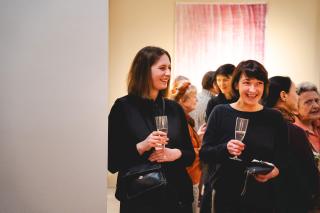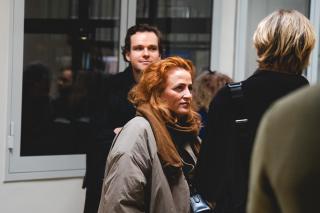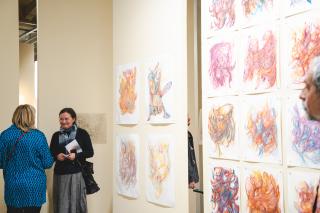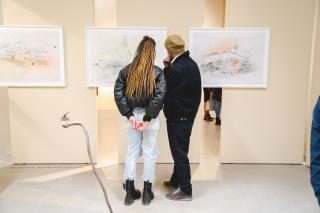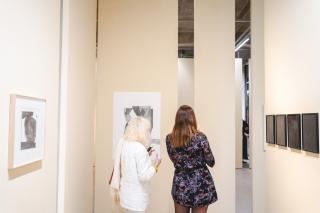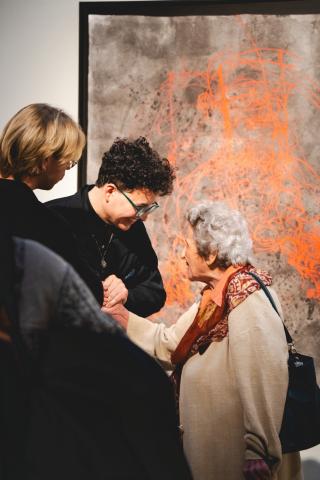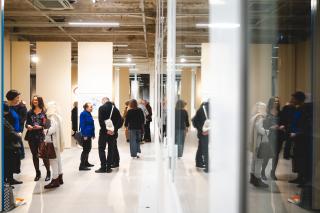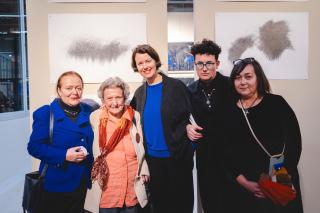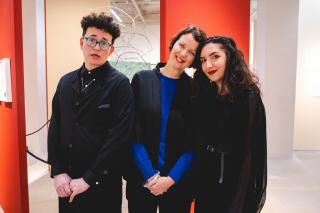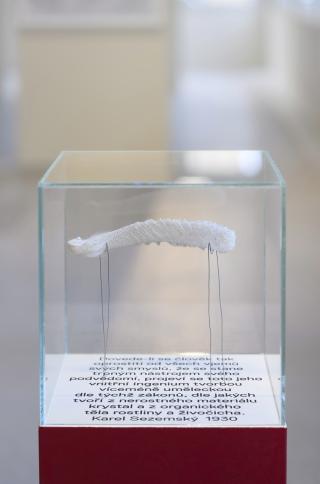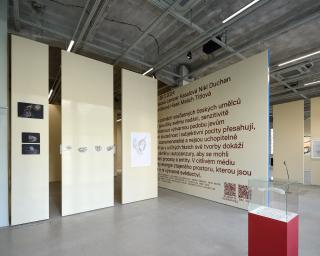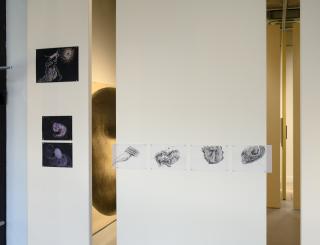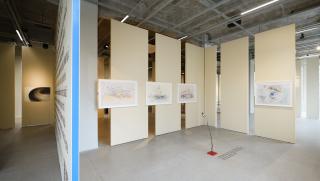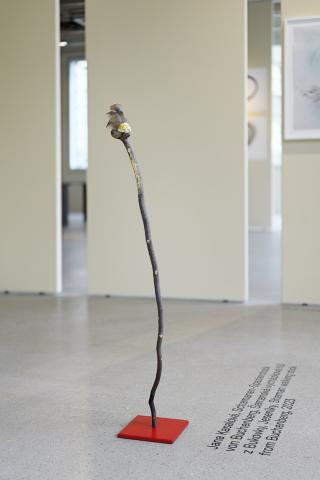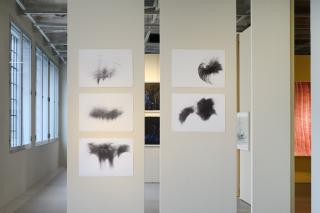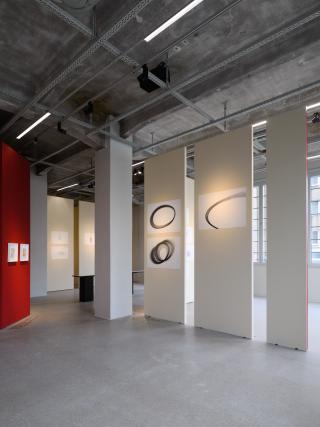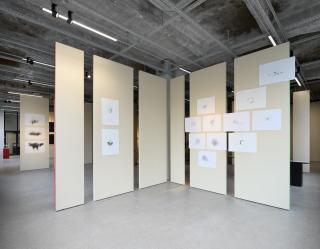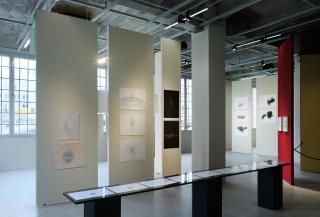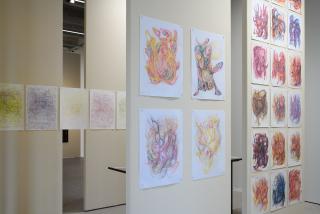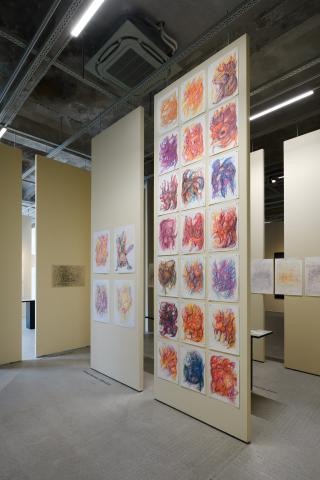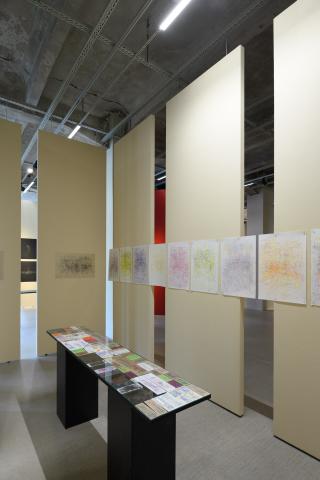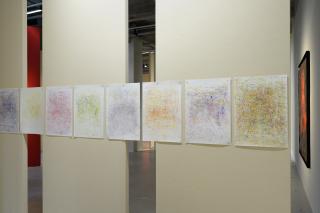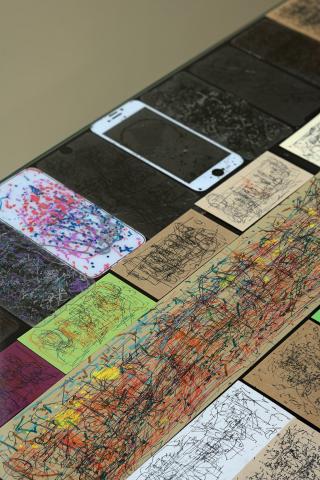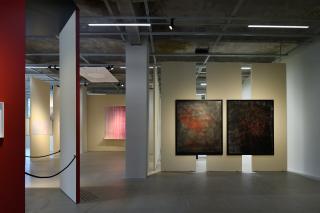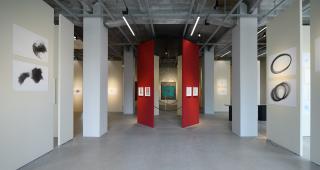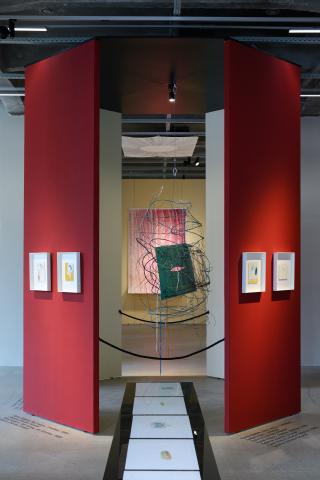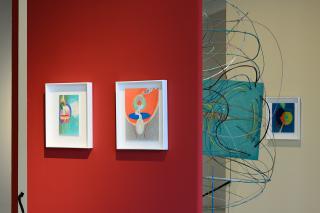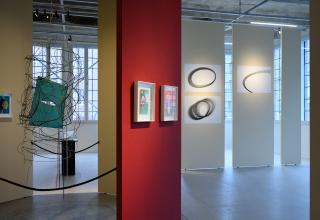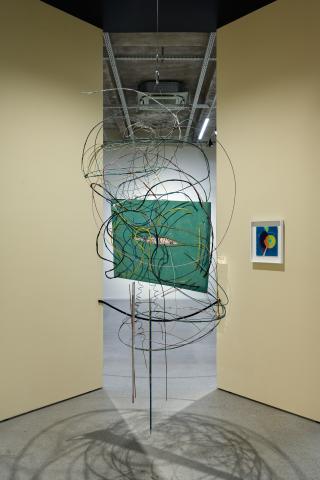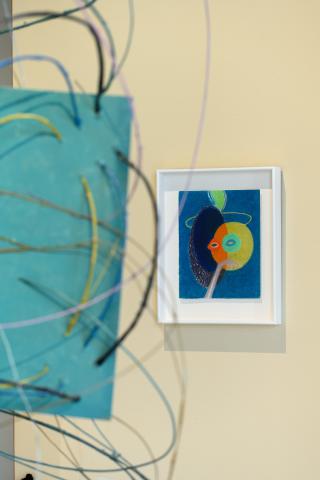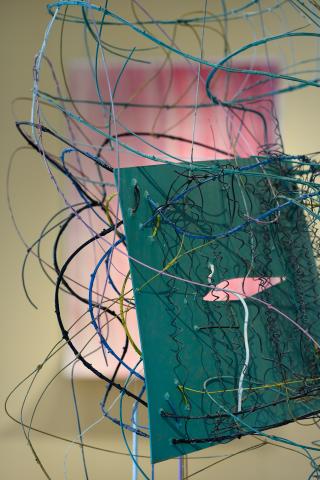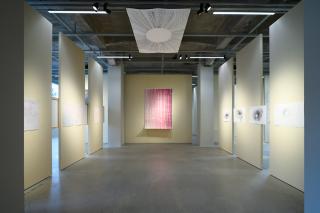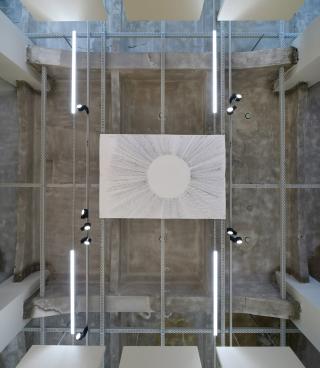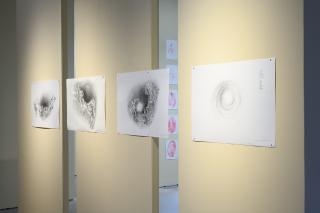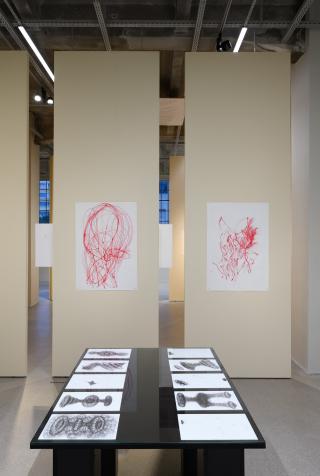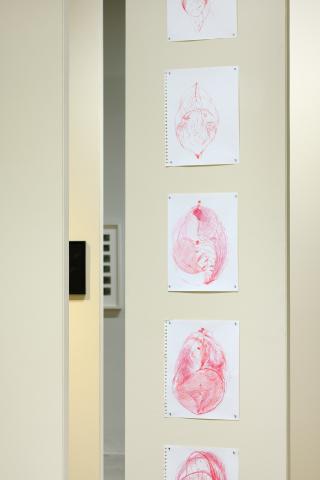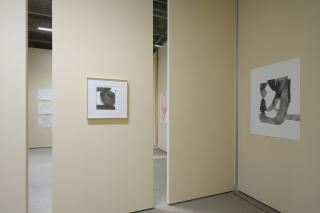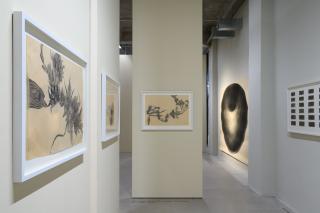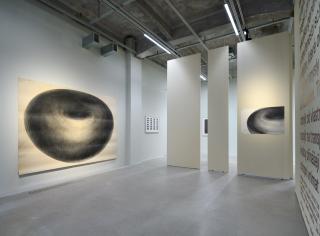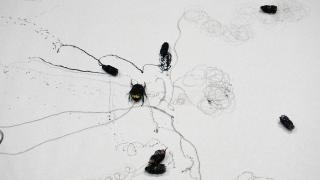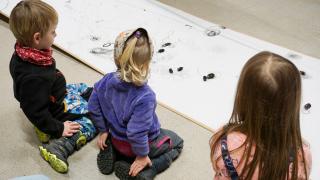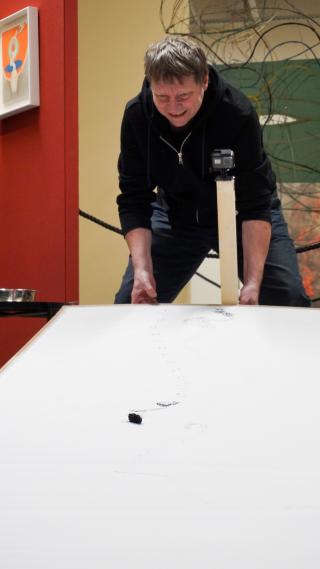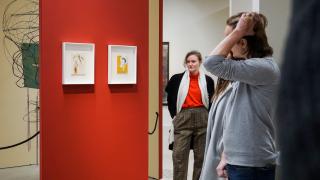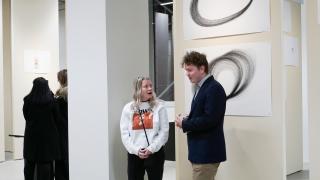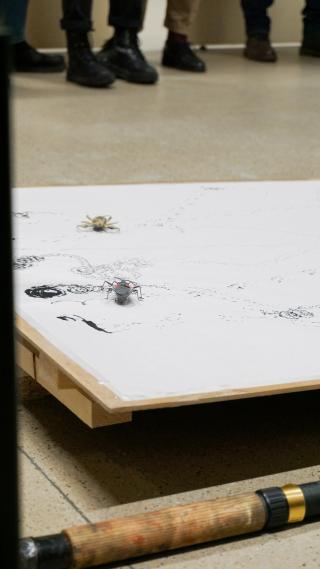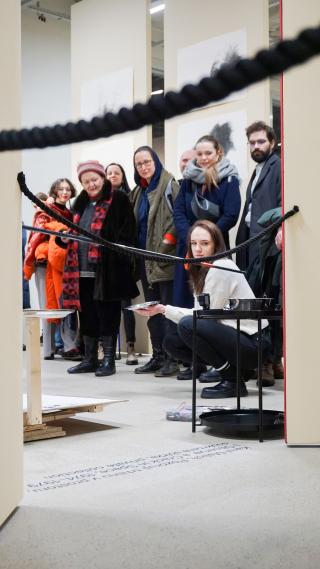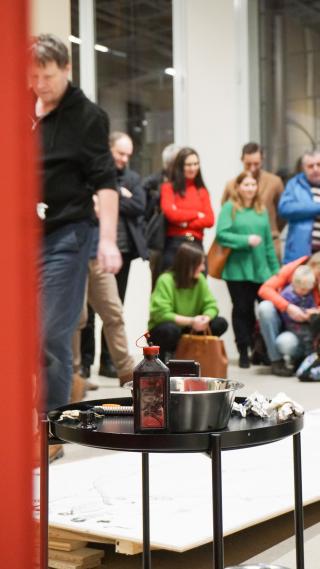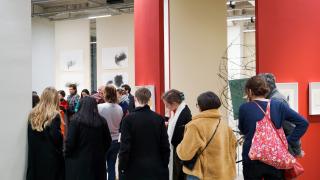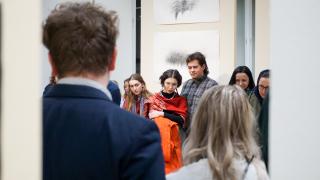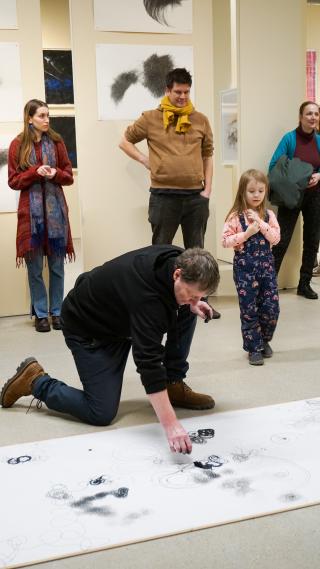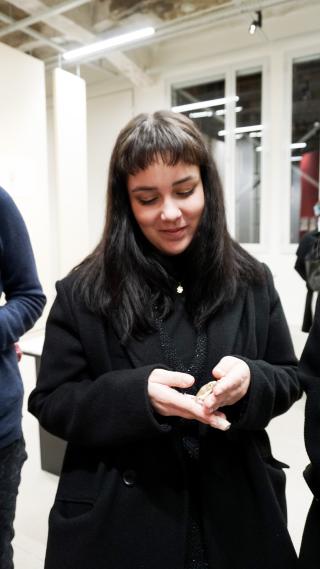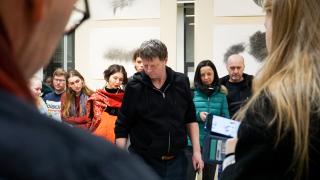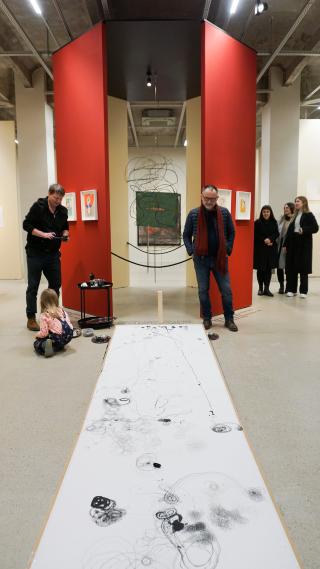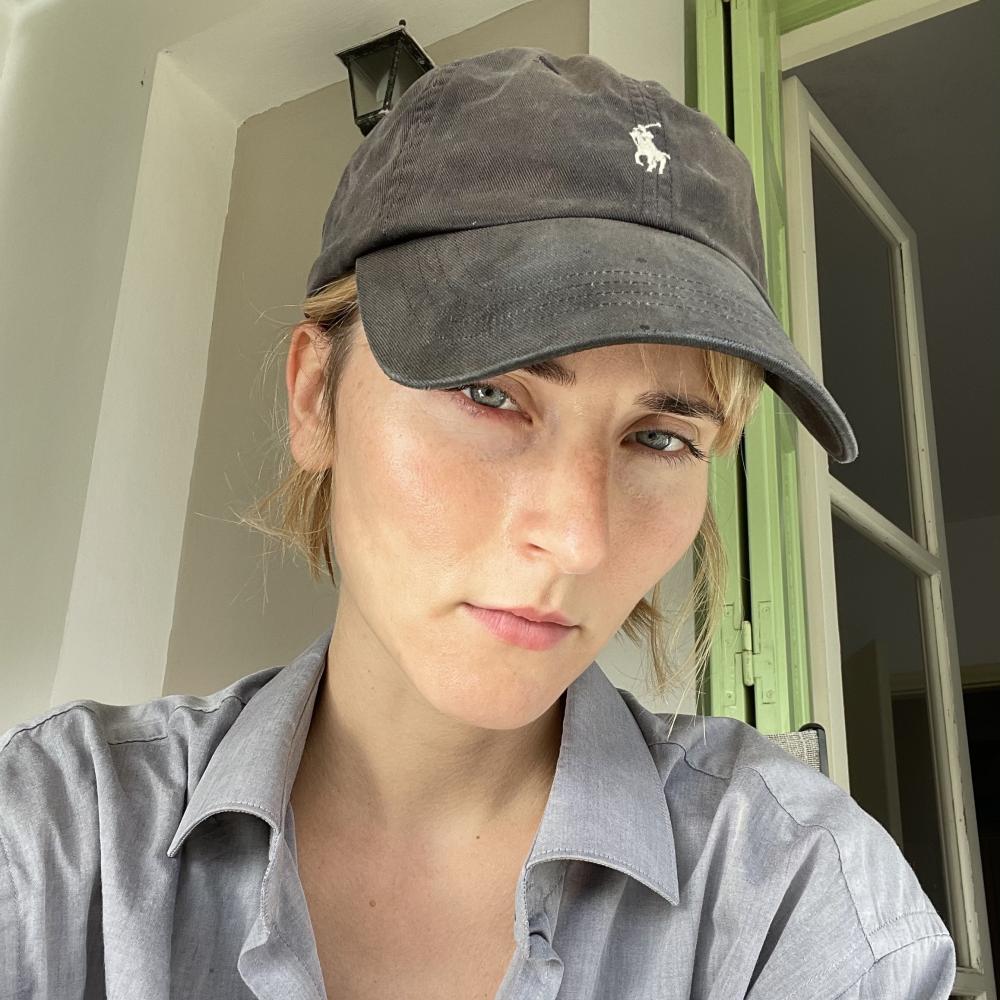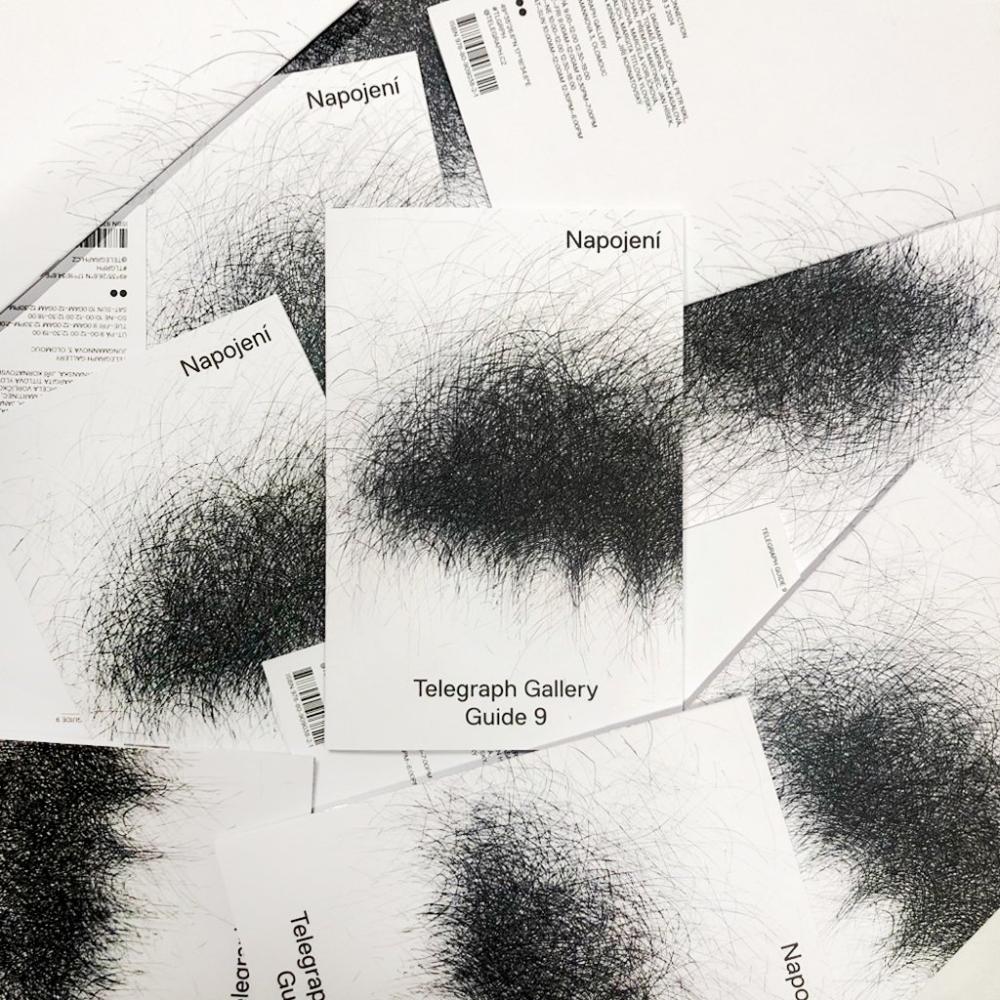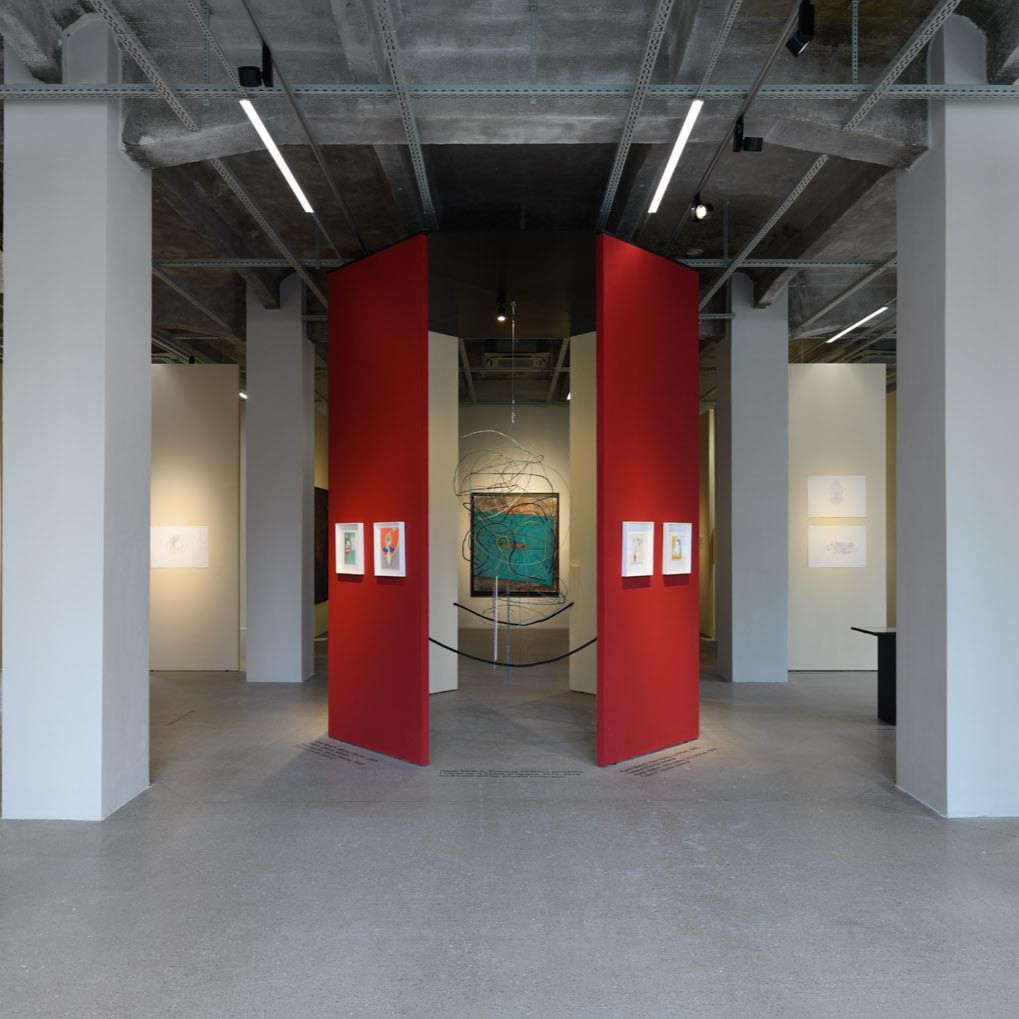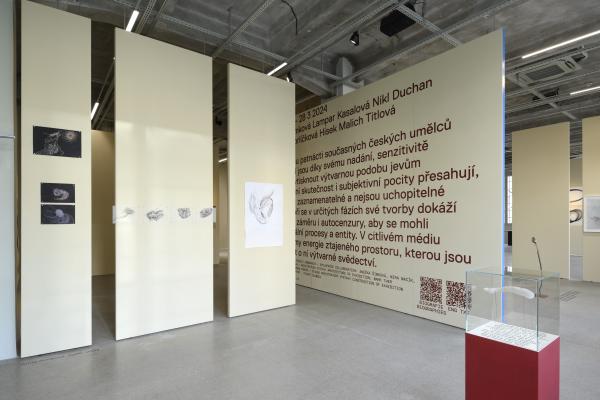
The recently installed exhibition Connection is now on view through March 28, 2024. The Telegraph now offers you, the reader, a guide to the footsteps of several artists featured in the exhibition.
As we enter the gallery space, in addition to the refined architecture and the introduction to the installation, we are drawn to the display case, titled Venus's Basket. The quote by Karel Sezemsky displays an underwater sponge that is a separate realm in terms of the grammar of biology - it belongs neither to plants nor to animals, although it bears the hallmarks of both. It is therefore a kind of parallel for the relationship between these two realms - just like the exhibition Connection, which bridges and connects the realms of consciousness and unconsciousness. That quote by Sezemsky already reveals the main theme of the installation, which is above all a heightened sensitivity - whether to the beauties of the external world or the dimensions of the internal world, and the ability to disconnect from one's own will, intention and self-censorship, in order to capture transpersonal processes.
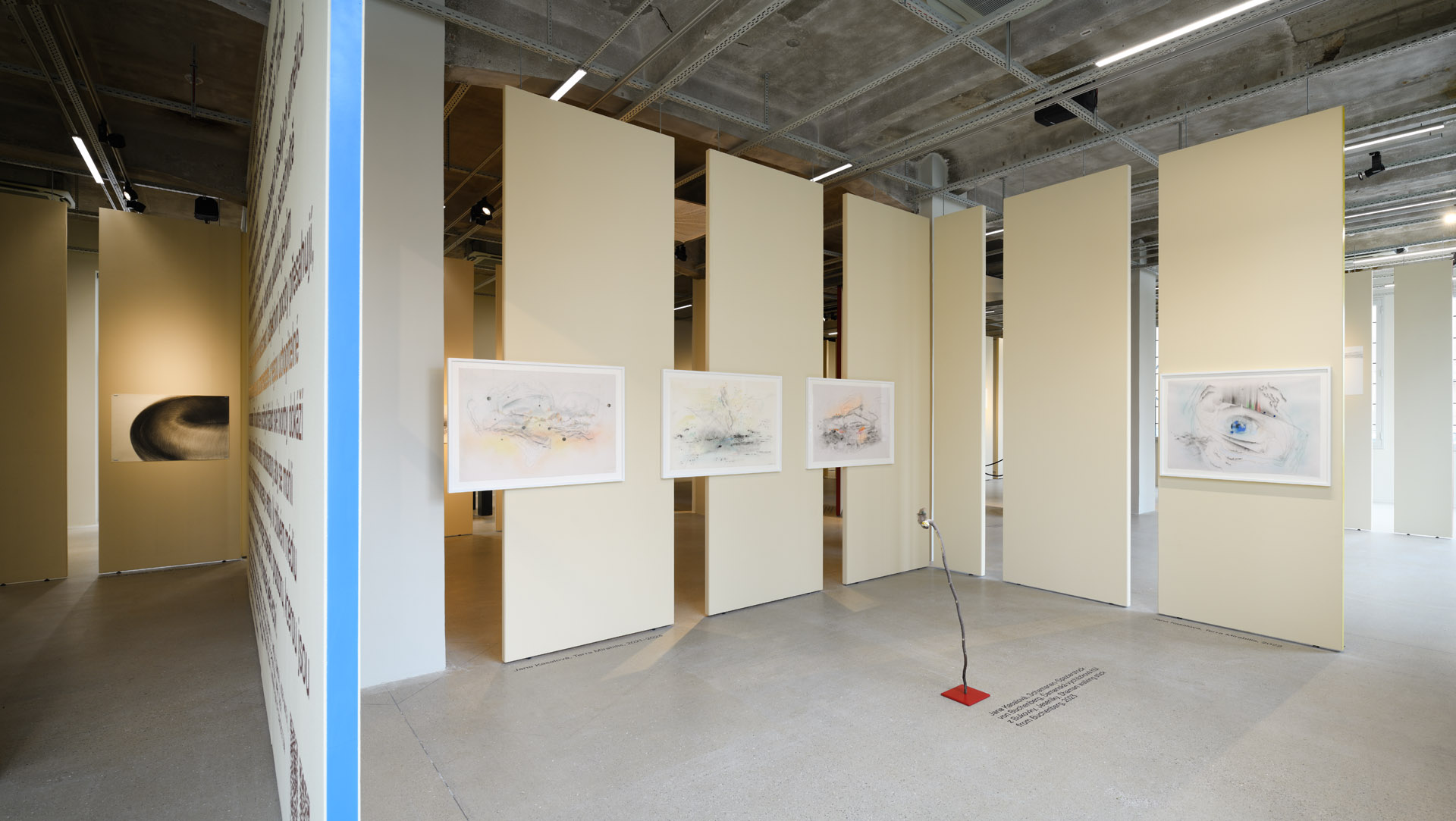
In the guided presentation, we are offered a space of the format that Telegraph has already experienced with the installation of Signal III, however, compared to the previous version, the gallery architecture is aerated and enriched with views between rooms. The current gallery layout corresponds to the chambers of human consciousness and forces us to enter those imaginary rooms or chambers with their own poetics and motifs. Some of these rooms are not passable, so we have to go back and let our curiosity lead us down a different path. In terms of the overall aesthetic, the architect Mark Ther gave the installation a basic ivory color that takes us viewers back in time to the communist regime in Czechoslovakia, when some of the artists of Connection were already in the art space. This abundant use of colour subconsciously connects us to the austerity and restrictions that set the canon for exhibitions in the last century, disconnecting us from the present and plunging us into a time long gone. To some, the colour scheme of the blue, red and yellow edges of the panels might remind one of the Bauhaus style, which emphasised the interconnection of architecture and art and their symbiosis. A possible example of this symbiosis is the central gazebo forming the core of the whole space... and since the central theme is the work of Karel Malich, it bears his works. It should be mentioned that visitors' personal interpretations of the exhibition may differ due to the prevailing abstraction and the unconventional conception of the space, but we cannot ignore the recommendation to contemplate each room separately and allow its intimacy.
The entrance room, apart from the already mentioned Venus's Basket, contains works by Anna Šimková, who does not date or sign her paintings and, as she says, leaves them in her own timelessness. This approach, in which the observer cannot fixate on any particular datum, may be unsettling for many, but surrendering to this timelessness can serve in a sense as a liberation and an introduction to an exhibition full of free streams of thought, meditations and spiritual phenomena.
In the space we can open by visiting the next room, we are struck by the monumentality of Jiří Kornatovský's large-scale drawings. The dominant work is undoubtedly Meditation by Archetype, whose meaning and motif is open to every individual. We may be impressed by a certain cyclical nature of the work, or even by its heaviness - we can make present in it a distressing situation that none of the visitors will perceive in the same way.
As we move on to the next space, this heaviness does not leave us in the presence of Jan Hísek. We can see a series of Pangs that Jan Hísek painted in connection with the melancholy after the death of his mother, a painting entitled Trauma, reminiscent of a possible gate or rift, whether in time, space or the human interior. In opposition to these works are the drawings Orlik's Forest and Two Boys on a Weir.
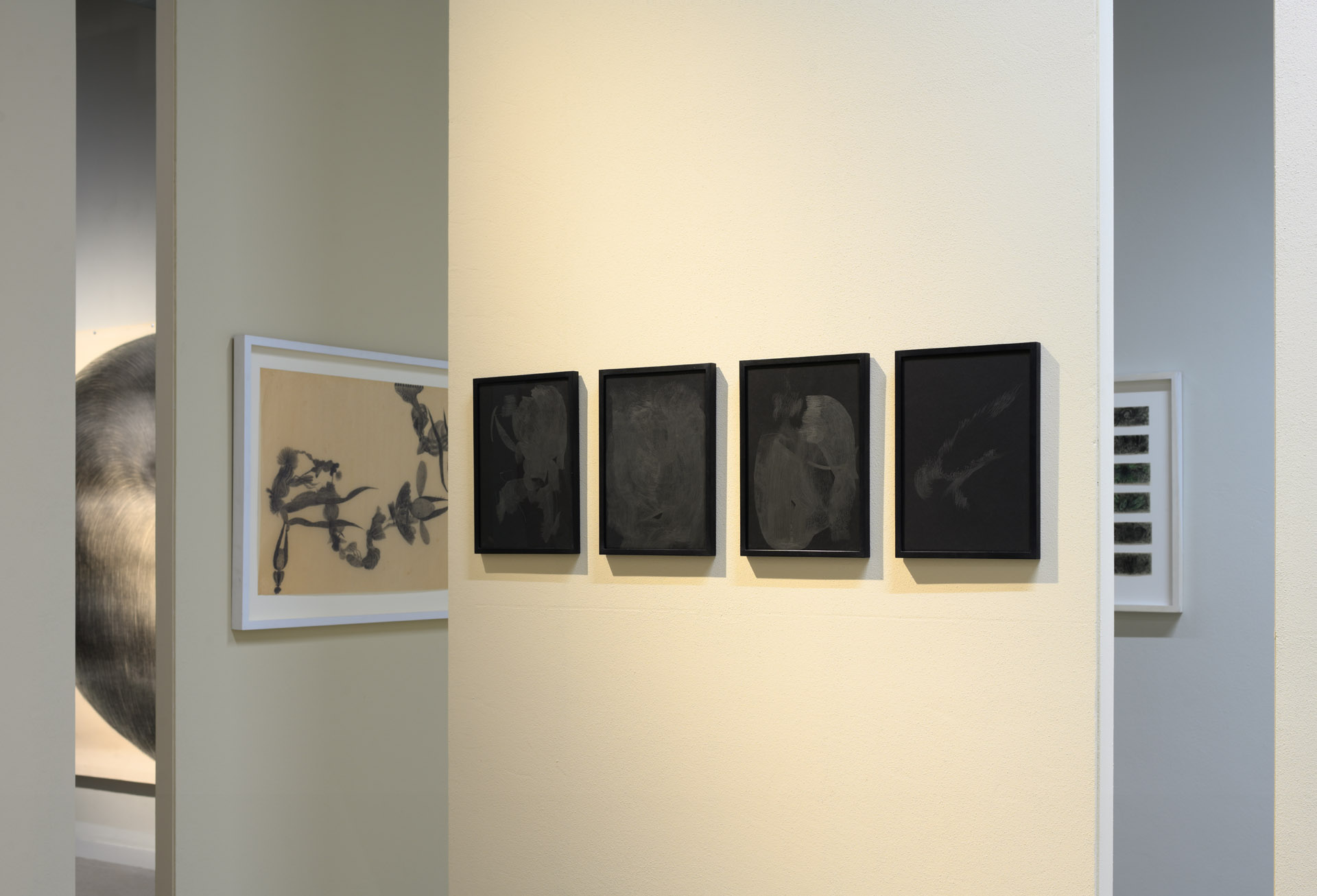
In the same direction, our steps lead us to the work of artist and photographer Taja Spasskova, originally from Belarus. The final form of her work is created through meditation methods and deals with social and spiritual themes. We see drawings of Core, Fullness and Growth. Visitors' varying sensibilities may associate or perceive the existing spaces separately, but the preceding sense of psychological heaviness often encourages us to grow.
In the final room of this circuit, we observe glazed drawings on a table by Alžběta Krňanská, whose work touches on themes of feminine sensitivity, the connection between the everyday and the inner world of the human soul, and her frequent use of ornament. These drawings can evoke objects and emotions of a wide spectrum - from cups and vases to tornado phenomena, cosmic processes and much more. Surrounding the drawings on the table are panels on which a series of colors by Marcela Vorlíčková, a graphic and web designer, are arranged. The shapes of her drawings complement Krňanská's broad spectrum of natural aspects of gentle structures, while at the same time giving us a signal that the path can lead the other way. Through the gaps between the panels we can see the works of other artists from afar, but it is impossible to pass through them, and so our steps are directed to the place where we started.
The illuminated space around Walking Sticks from Bukovka by Jana Kasalová, who incorporates art therapy and cartography techniques into her work, is surrounded by her other drawings. For example, Connection, which also attracts our attention outside the gallery, as it has become the face of the entire exhibition, or the Terra Mirabilis series, translated from Latin as the land of miracles.
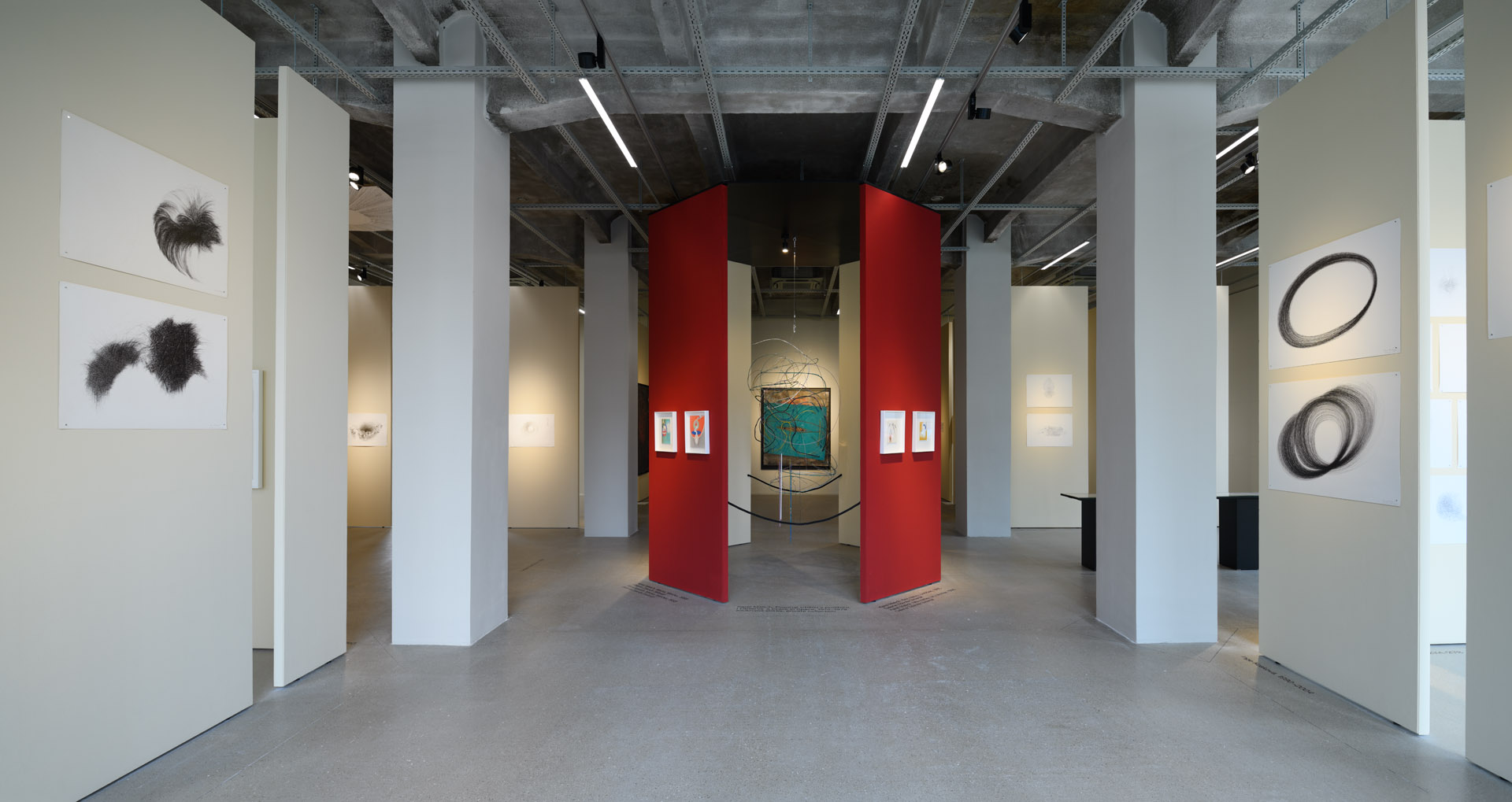
Already here one can observe that gazebo with paintings by Karel Malich, which can awaken in us the desire to stop for a moment and at the same time to move on - a symbol of a kind of starting point to other artists. The atrium of this cross-shaped ground plan with the gazebo are drawings by Inge Kosková, depicting black pencil strokes on white paper - flowing streams, expressing abstractly processed processes of nature or the energy of one's own body. Besides these, we also observe her drawings of the cross vault, as a basic element of sacred architecture. In the left wing from the gazebo, we stay with the sacral themes, along with large format drawings by Dagmar Havlíčková. We can see the influence of religion in art especially when looking upwards - we are talking about the drawing attached to the ceiling of the gallery. It is loosely related to the architectural elements of holy buildings with its circular design and we can ask whether it is an oculus of temples or perhaps a symbol of enlightenment.
Behind the gazebo we find two counterpoints - large-scale drawings and smaller works with accompanying text by the iconic underground painter of the 1970s, Margita Titlova Ylovsky. In her Drawings in the Dark series, she used an unconventional method of letting the currents of intuition carry her away in the darkened environment of Prague's ROXY club to create these emotive works. This intuitive process consisted mainly in the choice of colours, where the artist prepared dark backgrounds beforehand and then applied the colours randomly without any visual clues.
Here we have the further choice of going further into the room with only one entrance and also an exit, or heading backwards. If we were to go deeper, we would be treated to the drawings of Přemysl Martinec, an artist heavily inspired by surrealism, whose works showcase zoomorphic and naturalistic shapes, which, however, do not express anything concrete - it's just our impression. Behind this natural illusion, we are struck by the freneticism of Josef Duchan's works, which record rather than create. And he does this constantly. He absorbs everything he notices around him, regardless of the place, whether it is a studio or a cinema room... and thus, for the viewer, these drawings can remind us of the hustle and bustle of today's world, the constant overwhelm of information that seems almost identical even though each one is always different.
As we exit this temple of bustle, we are already walking into the slowly approaching end of the installation through a sequence of dynamic works by Tomáš Lampar. Although some of the drawings can often give the impression of a psychedelic trance, the smaller watercolours placed on the table are both calm and mind-opening. At Petr Nikl's - surrounded by light shining through the spacious windows - our steps come to an end, the drawings reminding us of gradual reverberations of energy, set in the white space of the paper. There is a disconnection.
